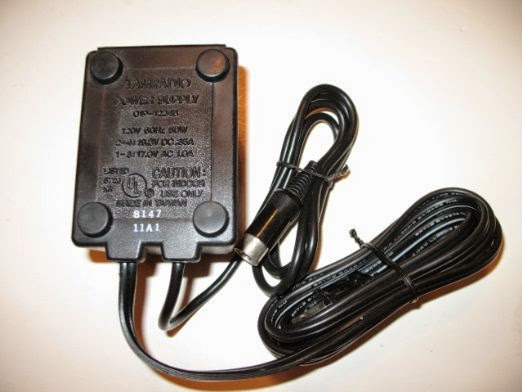The VIC-1020 Expansion Chassis
My VIC-1020 arrived today from Norway. It was made in Germany. The front says VIC-1020 but the back says VC-1020. The computer was made in Japan, and has been expanded to 40K and fitted with JiffyDOS. A micro-IEC SD card drive is housed in the chassis and contains my library of software images. A file browser shown on the monitor.
The VIC-1020 expansion chassis (VC-1020 in Germany) is simply a large metal enclosure which provides the VIC-20 computer with six additional expansion slots for cartridges (five pointing upward and one lying horizontally and pointing toward an opening on the the back of the VIC-1020).
The entire VIC-20 computer is placed into the VIC-1020, as shown, and a male edge connector on the 1020's slot expansion board is mated with the VIC-20's internal cartridge port. A monitor can be placed on top of the VIC-1020, giving the entire setup a PET computer-like appearance. Indeed, the black "CBM" label across the front of the VIC-1020's casing is similar to that used on the the PET line of computers. The choice of sheet metal for this enclosure seems natural, as Commodore had a sheet metal fabrication plant for the production of office filing cabinets and desks.
The VIC-1020's chassis has additional storage space which can be used to hide all of the cables and such, giving a typical VIC-20 set-up a much cleaner appearance. There is also a metal clip on the underside of the lid which can hold the RF modulator.
Slot expanders allowed the simultaneous use of several cartridges on a single VIC-20. This allowed features of utility cartridges (like the Programmer's Aid cartridge) and RAM expanders to be combined. Mine just contains a 3K RAM cartridge and a 32K one.
The 9V AC power pass-through is not merely a way to power the computer, but also provides supplemental power to the 6-slot expansion board, thus relieving the draw on the power supply inside the VIC. In fact, the computer will not even power up if auto-start cartridges are installed on the board and the supplemental power supply is not used. RAM is similarly unseen. Shutting off the unit using the rear switch clears any auto-start cartridge image that may be in memory.

I have the original PET style keyboard, but have swapped it out with a newer one. The reason is because the numeric keypad is hard wired to the keyboard controller pins and the Japanese VICs are simply not tall enough to fit everything inside without warping the case when closed. In fact, the height is so short that I had to cut off a six inch section of the plastic keyboard support rail on the top-left underside of the keyboard shown (near the 1, 2, 3... keys) to get the case to close naturally. I also had to cut a chunk of plastic off the the joystick Y-cable, which supplies +5V DC to the parallel printer adapter, to accommodate the metal enclosure.
The VIC-1020 chassis are quite rare and I had to look half way around the world to find this one. The effort paid off and I could not be happier with this VIC-20 set-up. I am quite pleased with its overall style and appearance. Finally, I would like to appreciate Lars Hanstad (kronuz) for the quick shipment (door-to-door in one week), excellent packing and chocolate bars from Norway!
Are you interested in computer history? Join the irregular regulars
Earl Evans, David Greelish, and Carrington Vanston, plus surprise
guests, in the show where everything old is news again. Gather 'round a
virtual table where today's talk is about yesterday's computers. Get
the skinny from the world of vintage computer hobbyists, collectors,
enthusiasts, and old school geeks. They cover modern day vintage tech
events, new developments for old hardware, the revival of retro tech,
the best of 8 bit culture, and take many strolls down memory lane. Head
on over to http://rcrpodcast.com and explore podcasts, review show notes and be informed of upcoming episodes. You'll be glad you did!
 In 1981 two Votrax employees, Kathryn Fons and Tim Gargagliano, published an article in BYTE regarding the topic of voice synthesis. This is a great source of history. BYTE republished it 15 years later, but now it is almost impossible to find easily. BYTE Magazine - February, 1996 (PDF)
In 1981 two Votrax employees, Kathryn Fons and Tim Gargagliano, published an article in BYTE regarding the topic of voice synthesis. This is a great source of history. BYTE republished it 15 years later, but now it is almost impossible to find easily. BYTE Magazine - February, 1996 (PDF)
.gif)
.gif)








